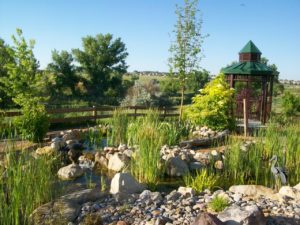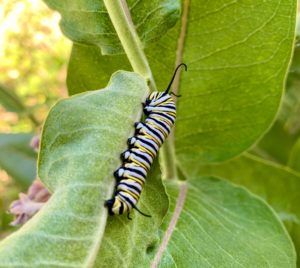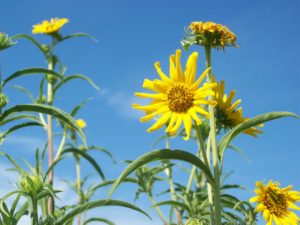Outdoor Gardens
Experience the wonder of Colorado’s wild invertebrates! The outdoor gardens at Butterfly Pavilion are designed to provide habitat for native invertebrates with a focus on native pollinators, while also providing four-season beauty and a place to wander, relax, and learn.
The outdoor gardens at Butterfly Pavilion are designed to provide habitat for native invertebrates with a focus on native pollinators, while also providing four-season beauty and a place to wander, relax, and learn. Take a hike outside, and investigate the native habitats surrounding the Pavilion!



What to look for:
Native plants – Our habitat garden features some beautiful native plants, such as Rocky Mountain beeplant, rabbitbrush, fleabane, and Rocky Mountain beardtongue.
Birds and butterflies – Many different species of birds and butterflies regularly visit our habitat garden. If you walk very quietly, you might spot a goldfinch feasting on sunflower seeds, or a painted lady butterfly drinking from an aster.
Life cycles – Butterflies require specific plants for their young, and our habitat garden features the host plants of many native Colorado butterflies. Look for monarch caterpillars eating the leaves of showy milkweed, or swallowtail caterpillars on the bronze fennel.
Hide and seek – Our habitat garden grows lush and tall in the warm months, providing shelter for butterflies and birds alike. Our young visitors also like the feeling of being in a wild place where the plants are taller than they are.
Shady retreat – The gazebos in the Discovery Garden provide a pleasant spot for rest and contemplation, especially on a hot day. The lawn is just right for a cartwheel or two.
Sights and smells – The sensory garden encourages our visitors to interact with the garden, using all of the senses. Sniff a chocolate flower and find out how the plant got its name. Touch the leaf of a lamb’s ear or the feathery seeds of the Apache plume.
Click here for a full list of daily programs and showtimes in our exhibits.



